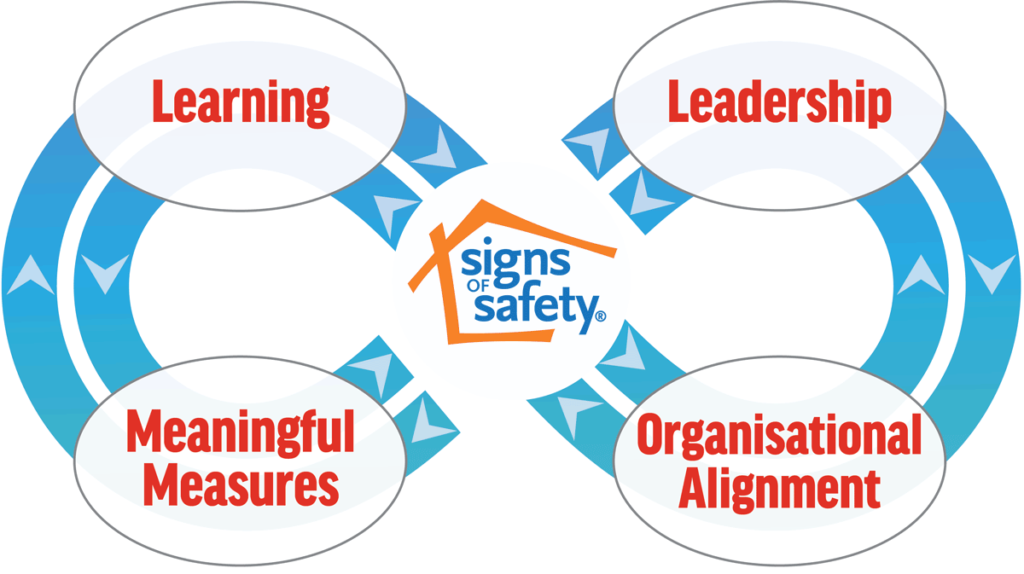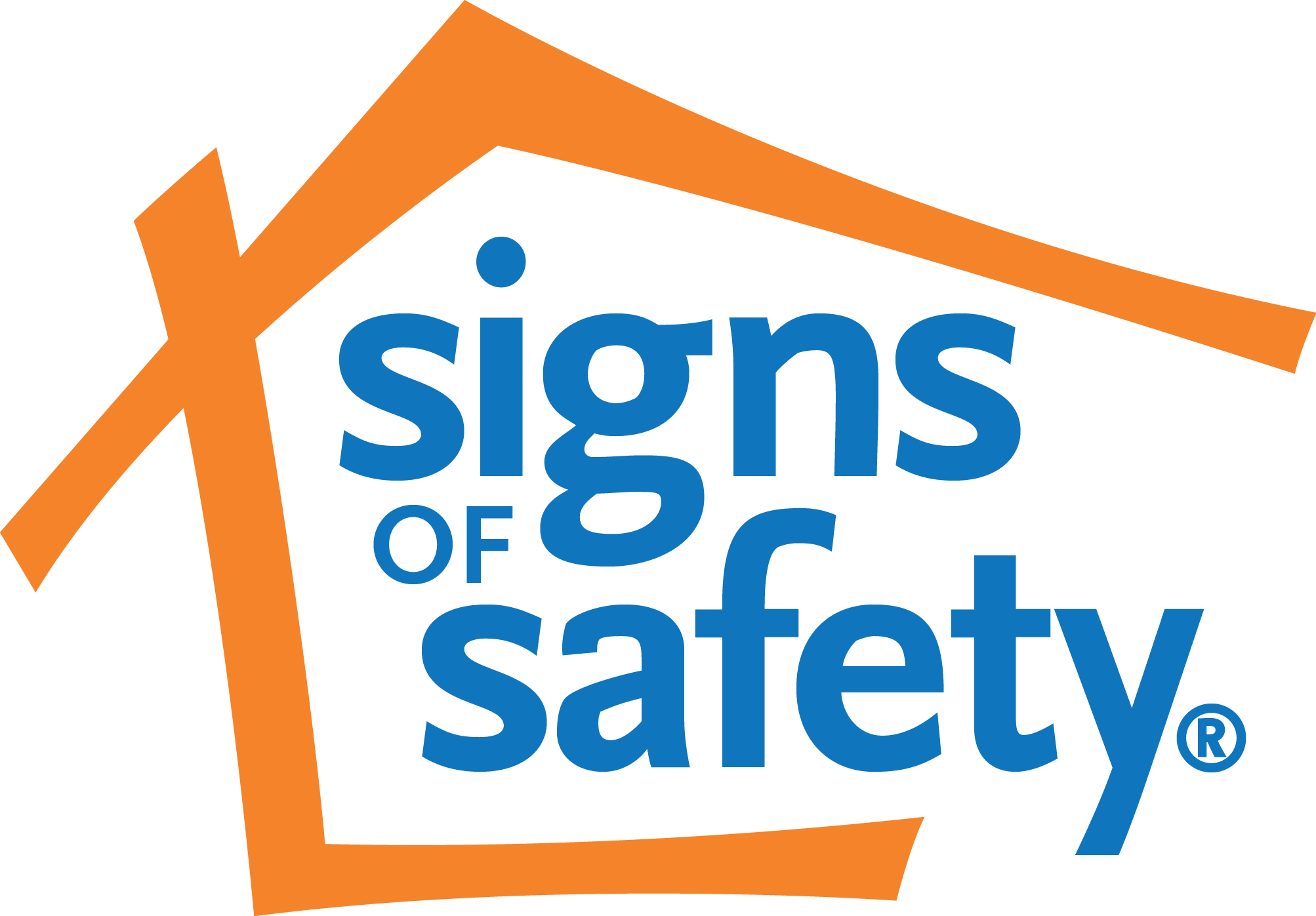To realise the benefits that the Signs of Safety approach can bring to child protection practice and to changing outcomes requires a whole-system commitment to aligning the organisation to the participatory practice. This lesson has been learned repeatedly in organisations around the world that have sought to implement the approach. For this reason, the Signs of Safety community has focused considerable attention over the past decade on researching, designing and supporting whole-system change that aligns with the approach. The implementation framework that supports Signs of Safety is illustrated in the diagram below.

Above: Signs of Safety implementation framework
Learning: Following core training with a drive for continuous learning in the workplace grounded on what is happening in practice and across the organisation.
Leadership: Development that builds congruence between how the organisation is led and managed and how the work is expected to occur with families.
Meaningful Measures: Participatory quality assurance, matched to the practice, measuring its breadth (how much is occurring), depth (how good it is) and impact.
Organisational Alignment: Case management processes and recording, including an aligned IT Solution, to match the practice. Partners being engaged to work with Signs of Safety.
We see implementation as a process where organisations use Signs of Safety as a vehicle to drill down into their practice, creating a learning organisation focused on how it is implementing the work, and reviewing outcomes, successes and failures, allowing them to continuously adapt to change as necessary while keeping to the key principles of the approach.
To achieve this, attention needs to be given to how the new way of working interacts with existing parts of the system, and how the system in turn aligns with the intervention. This is a more dynamic way of thinking about implementation than the common static framing, in which implementation involves installing a new intervention into a fixed system.
The dynamic nature of a Signs of Safety implementation is reflected in the framework’s illustration, showing how the implementation is a continuous learning and development cycle with the practice approach at the centre.
The implementation framework illustration also implies the organisational action learning processes, and the agility and responsiveness required to lead and drive change in large organisations operating within larger human service and political systems.
At its simplest, it illustrates the obvious point that everything an organisation does (its leadership, procedures, measurement and learning) must always focus on what practitioners actually do with children and families.
A Deeper Dive…
For a deeper dive into implementing Signs of Safety there are multiple downloadable resources available through the SIgns of Safety Knowledge Bank including:
- Implementation Prospectus
A quick summary of all the components and timeline for a typical Signs of Safety implementation. - Signs of Safety Comprehensive Briefing Paper
A deep dive into Signs of Safety practice, evidence base and approach to implementation.
Implementation in Your Organisation
Licensed Signs of Safety Consultants are equipped and experienced to assist organisations to implement the approach. You can find licensed consultants all around the world.
Elia is the international home of Signs of Safety and uniquely equipped to support large scale with experience delivering whole-country and state-wide implementations.
